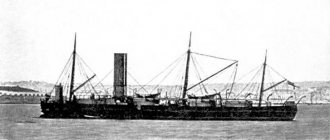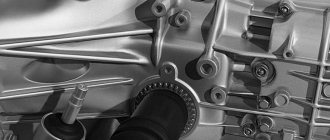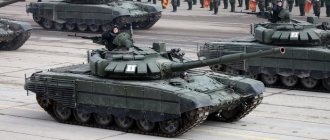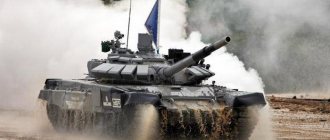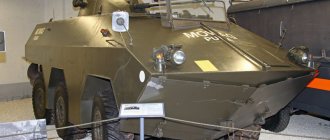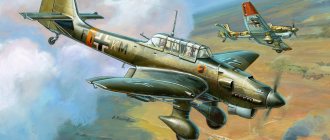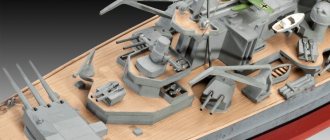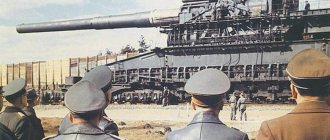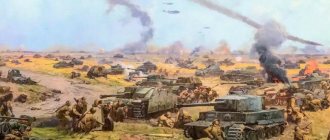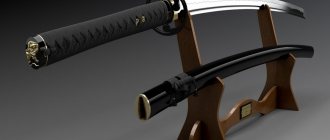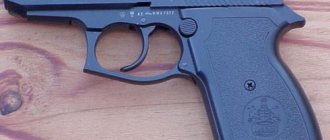The troops receive modified versions of the T-72, T-80 and T-90. What the updated vehicles have in common is better mobility due to increased engine power, additional anti-cumulative shields and more advanced dynamic protection, new equipment for viewing the battlefield and targeted shooting, as well as commander control of combat vehicles within the framework of a single tactical plan. The latter circumstance allows them to effectively interact with other combat units, including the new T-90M Proryv-3 and T-14 Armata tanks.
T-72B3
Speaking at the end of the 2020 Army Games, Russian Defense Minister Army General Sergei Shoigu said that “the Games have seriously contributed” to the process of technical improvement of the original T-72 line. First, the crews participating in the competition competed in T-72B (B1) vehicles. Then a modified version with the suffix “B3” appeared at the test site. “The technical solutions used on the modification of the T-72B3 made it possible to increase mobility, reliability and ergonomics,” noted the head of the military department.
The search for the optimal appearance of the modernized version took almost a decade. The first samples of the T-72B3 appeared in public in 2011. Over the next couple of years, vehicles of a similar appearance entered combat units. They differed from the original T-72B1 in the 2A46M-5 gun with improved ballistics and service life. The automatic loader was modified to use new shells with better armor penetration.
© Photo by the author The first samples of the T-72B3 appeared in public in 2011.
Visibility and shooting accuracy were increased thanks to the Sosna-U multi-channel sight-rangefinder with a thermal imaging camera and automatic target tracking (LKU missiles), as well as a digital ballistic computer with a weather sensor. The gunner can also use a backup 1A40-4 rangefinder sight. The tank commander has a combined (day and night) electro-optical device TKN-3MK.
To increase resistance to enemy weapons, Kontakt-5 dynamic protection units are installed on the turret and hull of the tank. Outdated radio communications equipment was replaced with VHF radio stations R-168-25U-2 from the Aqueduct complex.
T-72B3 with KDZ
Tank biathlons 2013-2017 were remembered for the appearance of T-72B3 samples with additional modifications based on testing experience, initial operation in units and participation in combat operations in hot spots. In addition, individual copies of the modernized vehicles took part in a dynamic display at the Alabino training ground, while others were exhibited along the path of spectators to the stands for more detailed acquaintance. According to military personnel who gave explanations to the public at the exhibition samples, the engine power was increased to 930 hp, and in some cases even higher.
© Photo by the author
On static sites of the International Military and Technical Forum "Army" 2017-2018. T-72B3 with KDZ was exhibited.
On static sites of the International Military and Technical Forum "Army" 2017-2018. T-72B3 with KDZ was exhibited. The T72B3 with KDZ differed from the vehicles participating in tank biathlons in appearance: different side screens, additional protection in the form of bars, plus bags hung on the sides of the tank for better protection against cumulative weapons.
According to the data table for it, a specific copy of the T-72B3 with KDZ was equipped with a V-84M engine with a power of 840 hp, while the standard T-72B (B1) was equipped with a V-84-1 with a similar indicator, and the original T- 72 (no suffix) - B-46 with 780 hp.
Main tank T-72
Main tank T-72
The most popular and famous Soviet tank of the last quarter of the 20th century. Created on the basis of the T-64A tank using the chassis of the experimental object 167. Developed at the UVZ design bureau (plant No. 183) from 1967 to 1972. Adopted by the Soviet Army by order of the Ministry of Defense No. 0148 of August 13, 1973. It was mass-produced at UVZ from 1974 to 1992.
SERIAL MODIFICATIONS: T-72 “Ural” (object 172M) – welded hull with a trough-shaped bottom. The upper frontal plate is made of three-layer combined armor (steel - textolite - steel). The tower is cast and has a complex configuration. 125-mm D-81TM cannon (2A26M2) with an electromechanical automatic loader, coaxial PKT machine gun, NSVT-12.7 Utes anti-aircraft machine gun, TPD-2-49 optical sight-rangefinder, 2E28M stabilizer, built-in equipment for self-digging and a device for fastenings for the KMT-6 mine trawl. Engine V-46. Combat weight 41 tons. Crew 3 people. Serial production from 1974 to 1975.
T-72 "Ural-1" (object 172M1) is a modernized version of the T-72 tank (object 172M) with improved armor protection of the hull and turret. The placement of the IR illumination of the L-2AG night sight and the heat-protective casing of the gun barrel have been changed. Serial production from 1975 to 1979.
T-72 (export, 1975) - differs in the design of the armor protection of the frontal part of the turret, the PAZ system and the configuration of ammunition.
T-72A (object 172A) – TPD-K1 laser sight-rangefinder, TPN-3-49 night sight with L-4 IR illuminator, 1A40 control system, solid side anti-cumulative shields, 2A46 gun, increased ammunition, 902A smoke grenade launch system “Cloud”, napalm protection system, traffic alarm system, driver’s night device TVNE-4B, increased dynamic travel of road wheels, V-46-6 engine. The tower is cast, with combined armor protection filled with sand cores. Since 1982 - weapon stabilizer 2E42-2. Serial production from 1979 to 1985.
T-72M (1980) – export version of the T-72A tank. It was distinguished by its armored turret design, ammunition configuration, and collective defense system.
T-72M1 (1982) - a modernized version of the T-72M tank. Additional 16 mm armor plate on the upper frontal part of the hull, combined turret armor with sand cores as filler.
T-72AV (1985) – T-72A with mounted dynamic protection.
T-72B (object 184, 1985) – 9K120 “Svir” guided weapons complex and 1V40-1 control system (laser sight-rangefinder TPD-K1, ballistic computer, sight-guidance device 1K13-49, stabilizer 2E42-2 with electro-hydraulic drive for vertical and electric machine horizontal guidance and other elements), 2A46M gun. Mounted dynamic protection "Contact" of 227 containers. Engine V-84-1 with a power of 840 hp. Complex of communications equipment “Paragraph” (VHF radio station R-173, radio receiver R-173P, antenna filter unit and laryngophone amplifier). Combat weight 42.5 tons. Serial production since 1985. Since 1988 - built-in dynamic protection.
T-72B1 (object 184-1, 1985) - T-72B without mounting some elements of the guided weapons complex.
T-72S (1987) – export version of the 7-725 tank. Hull and turret armor at the level of the T-72M1, 155 dynamic protection containers, and a different set of ammunition for the gun.
T-72B2 (Object 184M) - Russian experimental version with the Sosna sight, 2A46M-5 cannon, Relikt VDZ, 1000 hp V-92S2 engine. With.
T-72B3 - modernized in 2011 with the Sosna-U sight, a new fire control system, communications and an upgraded 2A46M-5 gun.
T-72B3 arr. 2014 - modification of the T-72B3 2014 for Tank biathlon. It is distinguished by the presence of a panoramic thermal imaging device for the commander, increased engine power (1130 hp), automatic gear shifting and a motion control system with a voice informant for critical operating modes of components.
T-72B3 arr. 2016 - version with Relikt dynamic protection, 2A46M-5-01 cannon, V-92S2F engine, automated gearbox, digital display and rearview television camera. It was first presented to the public at a military parade on Red Square on May 9, 2017
T-72 is the world's most popular tank of the second post-war generation. Under Soviet license it was produced in Poland, Czechoslovakia, Yugoslavia (M84) and India. Actively exported. As of 1995, the T-72 was in service in Algeria (285 units), Bulgaria (330), Hungary (124), India (1400), Iraq, Iran (150), Kuwait (200 M84), Libya (145), Poland (777 T-72 and 20 RT-91), Romania (30), Slovakia (272), Slovenia (36 M84), Syria (1400), Finland (160), Croatia, Czech Republic (563), Yugoslavia (M84) . According to data announced by the Soviet side at the Vienna negotiations on the limitation of conventional weapons in Europe, in 1990, there were 5,086 T-72 tanks of all modifications on the European territory of the USSR, as well as in units stationed in Eastern Europe. Of this number, there are 1607 tanks in Belarus, 1045 in Ukraine, 246 in Armenia, 251 in Georgia and 314 in Azerbaijan. After the collapse of the USSR, some of these vehicles entered service with the newly formed national armies, and some were exported to Russian territory.
The T-72 received its baptism of fire during the 1982 Arab-Israeli war in Lebanon. They were in service with the Syrian troops and showed their complete superiority over enemy armored vehicles. According to Israeli experts, these combat vehicles turned out to be low-vulnerable to both tank and aircraft weapons. According to representatives of the Syrian command, not a single T-72 tank was lost in the battles of the summer of 1982. T-72s were actively used by Iraq during the war with Iran. The Western press reported that Iraq received the first 100 vehicles from the USSR in 1979–1980. Large-scale deliveries continued during the war, including from Poland. By the end of hostilities, Iraq had 800 T-72 tanks, and by the beginning of the Gulf War there were about 1000 of them in the Iraqi army. Most of the Iraqi “seventy-seconds” were concentrated in the divisions of the Republican Guard, which had the highest level of combat training. At the end of February 1991, these formations clashed with American troops in the Basra area and were defeated. According to American data, the Iraqis lost 500 T-72s; the American side allegedly did not suffer any losses. Both seem unlikely.
Yugoslav-made M84 tanks were used by all warring parties during the civil war in Yugoslavia from 1991 to 1993. Since 1991, T-72s have been repeatedly used in armed conflicts in the CIS.
Based on the T-72, command tanks T-72K, T-72AK, T-72BK, the BREM-1 repair and recovery vehicle, the MTU-72 bridge layer (object 632), the IMR-2 engineering clearing vehicle, and the TOS multiple rocket launcher flamethrower system were serially produced -1, BRM-7 combat mine clearing vehicle and 2S19 Msta self-propelled howitzer.
TACTICAL AND TECHNICAL CHARACTERISTICS OF THE T-72A TANK
COMBAT WEIGHT, t: 41.8. CREW, people: 3. OVERALL DIMENSIONS, mm: length – 9530, width – 3590, height (on the turret roof) – 2190, ground clearance (on the main bottom) – 470. ARMAMENT: 1 2A46 gun of 125 mm caliber, 1 PKT machine gun 7.62 mm caliber, 1 NSVT anti-aircraft machine gun 12.7 mm caliber, 12 81 mm caliber launchers for launching smoke grenades. AMMUNITION: 44 rounds, 300 rounds of 12.7 mm caliber, 2000 rounds of 7.62 mm caliber. AUTOMATIC CHARGER: electromechanical, with a constant loading angle. WEAPONS STABILIZER: two-plane electro-hydraulic 2E28M. AIMING DEVICES: laser sight-rangefinder TPD-K1, periscope night sight TPN-3-49. RESERVATION, mm: combined projectile protection. ENGINE: V-46-6, 12-cylinder, four-stroke, V-shaped, multi-fuel diesel engine with liquid cooling and a centrifugal supercharger; power 780 hp (574 kW) at 2000 rpm. TRANSMISSION: guitar, two planetary seven-speed gearboxes with friction engagement and hydraulic control, planetary final drives. CHASSIS: six double rubber-coated track rollers on board, three single support rollers with internal shock absorption, rear drive wheel with removable ring gears (lantern engagement), guide wheel; individual torsion bar suspension, hydraulic telescopic shock absorbers on the suspensions of the 1st, 2nd and 6th track rollers; each caterpillar with RMSh has 96 tracks 580 mm wide, track pitch 137 mm. MAX. SPEED, km/h: 60. POWER RESERVE, km: 700. OBSTACLES OVERCOME: climb angle, degrees. - thirty; ditch width, m – 2.8; wall height, m – 0.85; ford depth, m – 1.8 (with OPVT-5 m). COMMUNICATIONS: radio station R-123M, intercom R-124.
T-72B3M
According to media reports, in March 2016, UVZ received a contract worth 2.5 billion rubles to upgrade 150 tanks to the B3 version. According to the contract, the work includes re-equipment with the V-92S2F with a power of 1,130 hp. (special development for installation in the dimensions of the power compartment of combat equipment) and the installation of the Relikt dynamic protection kit instead of the more ancient Kontakt-5.
It is also reported that the track tracks are being replaced with more reliable ones, with a parallel hinge. The placement of ammunition and fuel in the tank has been optimized, a climate control system, additional protective screens and grilles have been installed. Domestic matrices of IR devices are used instead of imported ones. Some tanks are equipped with a new panoramic commander's sight, which has improved the ability to find targets and accurately aim weapons.
Experience from the Middle East is reflected in the installation of an automatic transmission, which allows for faster reverse gear. Syrian tank crews often used the T-72B3 during battles in populated areas, quickly moving out of cover to shoot at the enemy, and without hesitation, returning back so as not to fall under return fire.
© Photo by the author
T-72B3M were exhibited at the Army forum.
Tanks of the “B3” modification, with a new look and more powerful, have recently been attracted to participate in parades, competitions and exhibitions. At the Army forum sites, including a static exhibition at the Congress Center in Kubinka, samples were exhibited with data tables for them, which made it possible to compare them with earlier exhibits.
According to the tables, the mass in combat equipment increased from 45.6 to 46.5 tons, and the engine power increased from 840 hp. (the first batches of T-72B3 retained the B-84, which had undergone major overhaul) up to 1,130 hp. (when installing a new V-92S2F). The maximum speed on the highway remained at 60 km/h. The highway range was reduced by fifty kilometers, to five hundred.
Speaking on September 6 this year. Following the results of the 2020 Army Games, Sergei Shoigu said that “a modification of the T-72B3M has appeared, which is not inferior in its characteristics, and in some ways superior to modern foreign tanks.” “The Ministry of Defense plans to modernize all T-72 tanks in service to this modification,” he said.
On the trail of the Tiger
Even in overseas ratings, Leopard-2 is often ahead of the American Abrams M1A2. Military experts, of course, have reason to put the German car in first place. But the title of “best tank in the world” should be treated with a dose of healthy skepticism. Take a look at the Leopard-2 turret, doesn’t the anti-aircraft machine gun remind you of anything? That's right, this is the MG3A1 - a direct descendant, more precisely adapted for the modern MG-42 cartridge from the Second World War. I understand, a very successful “machine”, but not for the third millennium! Only very recently, on Bundeswehr tanks, the legendary machine gun began to be replaced with a modern Heckler & Koch MG5 or a remote-controlled module with a 12.7 mm “barrel.”
Leopard modification 2A4. A tower with armor plates without a rational angle of inclination. Even a child can tell that the tank was made in Germany.
Leopard modification 2A4. A tower with armor plates without a rational angle of inclination. Even a child can tell that the tank was made in Germany.
In the animal world, the large cat leopard belongs to the panther genus, just like the tiger. It's funny - these animalistic generic traits are easily visible in German armored vehicles. Leopard-2, like the Wehrmacht tanks of World War II, is distinguished by the vertical installation of armor plates. Rational angles of armor on the hull and turret are minimal, especially on early modifications. Moreover, the huge Leopard is oversized in width and quite heavy - typical “tiger” problems that make transportation by rail difficult.
It turns out that the Germans are stepping on the same rake with enviable tenacity? Not in everything. During the war with the USSR, the vehicles of the cat tribe had problems with service life, engine power, and, most importantly, the Germans were unable to repair their complex tanks in the field. So, the mileage of Leopard-2 before major repairs is 10 thousand kilometers. The power plant is a 1,500 hp turbodiesel, combined into a single unit with a hydromechanical transmission. In addition to high power supply, this technical solution also provides good maintainability - the assembled power plant can be changed in 35 minutes even in field conditions. Excellent indicator!
|
Take a closer look at the machine gun. It is a direct descendant of the World War II MG-42. |
T-80BVM "Motoball-2"
Starting from the mid-seventies of the last century until the collapse of the Soviet Union, domestic industry simultaneously produced two lines of main battle tanks. One is “Ural”, represented by the T-72 and its further development T-90; the other is represented by T-64 and T-80. The first was distinguished by the use of diesel engines, while the T-80 uses a gas turbine. Following the results of the fighting in the Chechen Republic, as well as as part of optimizing the size of the Armed Forces, it was decided to transfer the gas turbine tanks to storage bases.
At one time it seemed that upon completion of orders from South Korea and Cyprus for one and a half hundred T-80UE, this line would die out. However, the events of recent years have shown the opposite: the Ministry of Defense not only returned the T-80 from storage bases to combat units, but also decided to modernize it. The topic was entrusted to Omsktransmash JSC and SKB Transport Engineering JSC.
© mil.ru
Tankers of the Western Military District in the Moscow region received T-80BVM tanks.
The general direction of work is the unification of the T-80BV (1985) with the “Ural line”. T-80BVMs that have undergone modernization will receive a Sosna-U gunner's sight, communications equipment and other equipment from the T-72B3, and a protection system from the T-90M. The industry received an order to modernize combat vehicles of the T-80BM type during one of the Army forums. The relevant topic is “long-term in nature”. First, it is planned to release an initial batch of about 60-80 units to re-equip a couple of tank battalions.
The modernized model was first demonstrated in September 2017 on the occasion of Tankman’s Day on the territory of the 33rd combined arms training ground near the city of Luga, Leningrad Region. Then one vehicle performed in a dynamic display at the Alabino training ground during the Army-2018 International Military Forum. Externally, the updated tank is noticeably different from the T-80UE-1, which traditionally take part in large numbers at various events at the forum sites, performing target shooting in range conditions and demonstrating ease and precision of control in the “tank ballet”.
The number of T-80 fleet in the Russian Ground Forces is estimated by foreign sources: five hundred units in combat units and another three thousand in storage warehouses. Among this set there are modifications “B”, “BV” and “U”, which were assembled in Leningrad and Omsk. At first they were equipped with motors (developed by the design bureau named after V.Ya. Klimov) with a power of 1,000 hp, later - 1,100 and 1,250 hp. Over the years of serial production, the weight of the tank increased from 42 to 46 tons, and grew a little more during modifications.
© mil.ru
T-80BVM performs target shooting in range conditions.
The UE-1 modification, weighing 47 tons, accelerates to 70 km/h and has a highway range of 500 km. While maintaining the power at the same level, the improved GTD-1250 power units on the T-80BVM demonstrate lower fuel consumption, comparable to their “diesel counterparts”. In short, upgrading to the T-80BVM “Motobol-2” variant will significantly increase the combat capabilities of combat vehicles, bringing them to the level of modern requirements.
